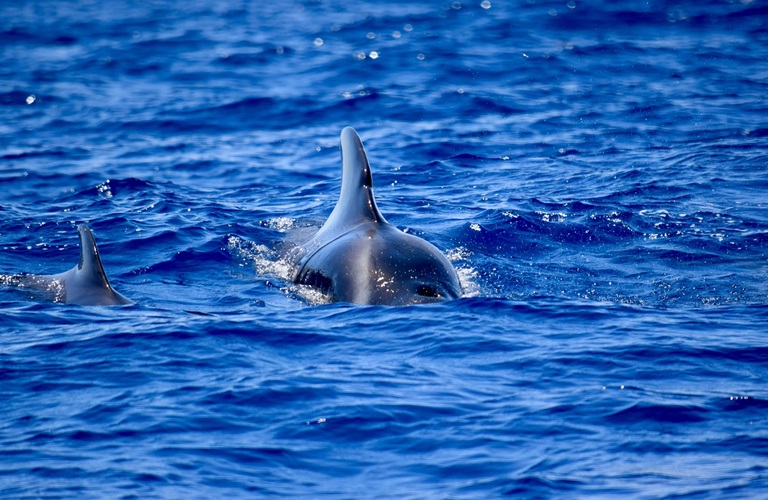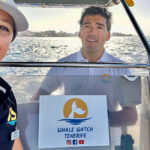Pilot whales are fascinating creatures that capture the imagination of anyone lucky enough to encounter them. This is the cetacean species we most commonly observe on our Tenerife whale watching tours. The resident Pilot whale population along Costa Adeje, Tenerife, is one of the largest populations in the world! A wonderful opportunity for whale and dolphin watching in Tenerife.
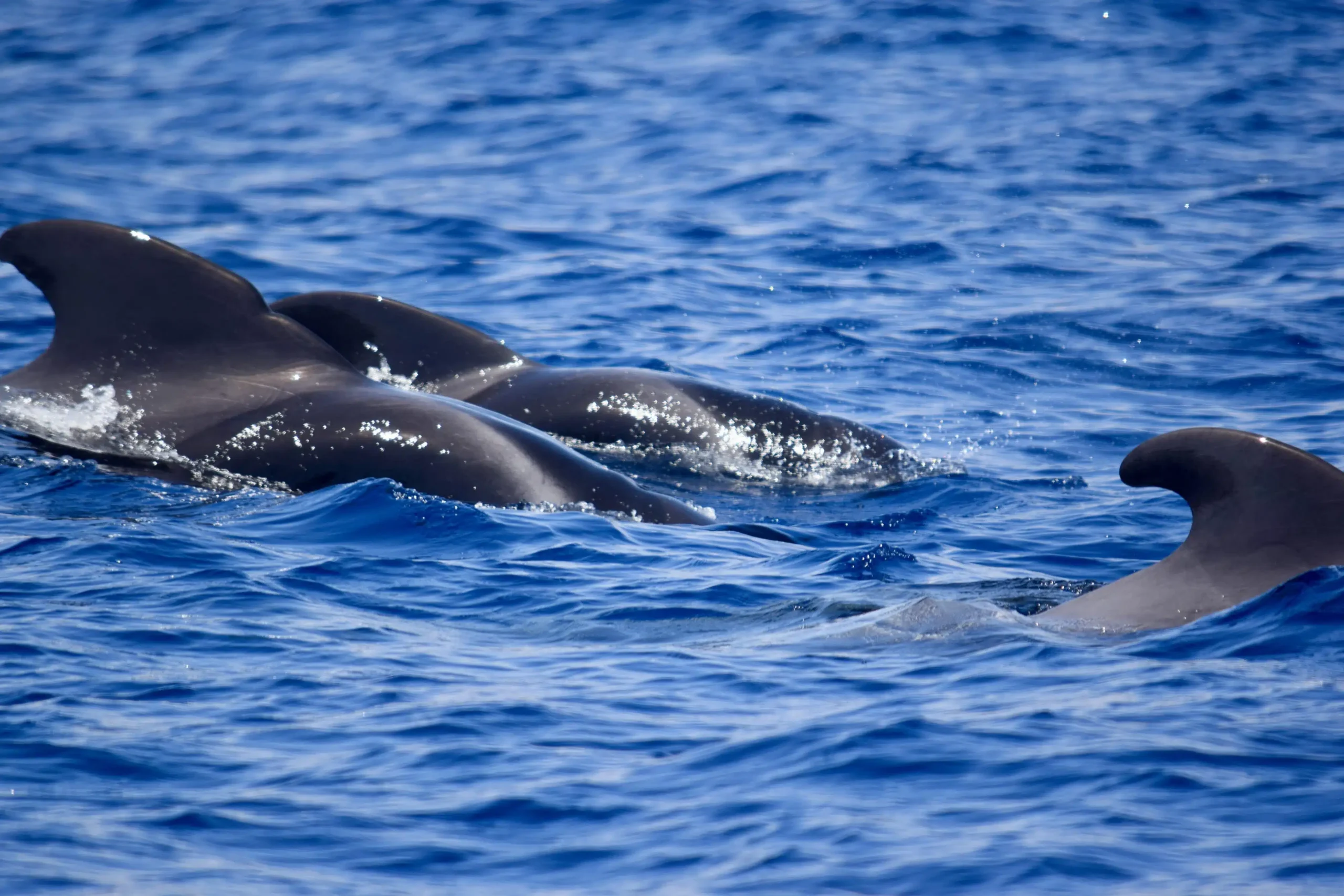
Here are a few interesting facts about pilot whales that will deepen your appreciation for these majestic marine animals:
Social Creatures: Pilot whales are highly social animals and are often found in groups called pods, which can consist of 10 to 30 members. These pods have strong social bonds and often exhibit cooperative behaviors such as hunting and caring for young together. We often see ‘nursery pods’ during the spring and summer when the baby Pilot whales are born here in Tenerife.
Large Brains: Pilot whales have exceptionally large brains, which are among the largest of any animal species relative to body size. This indicates their high level of intelligence and complex social behaviors.
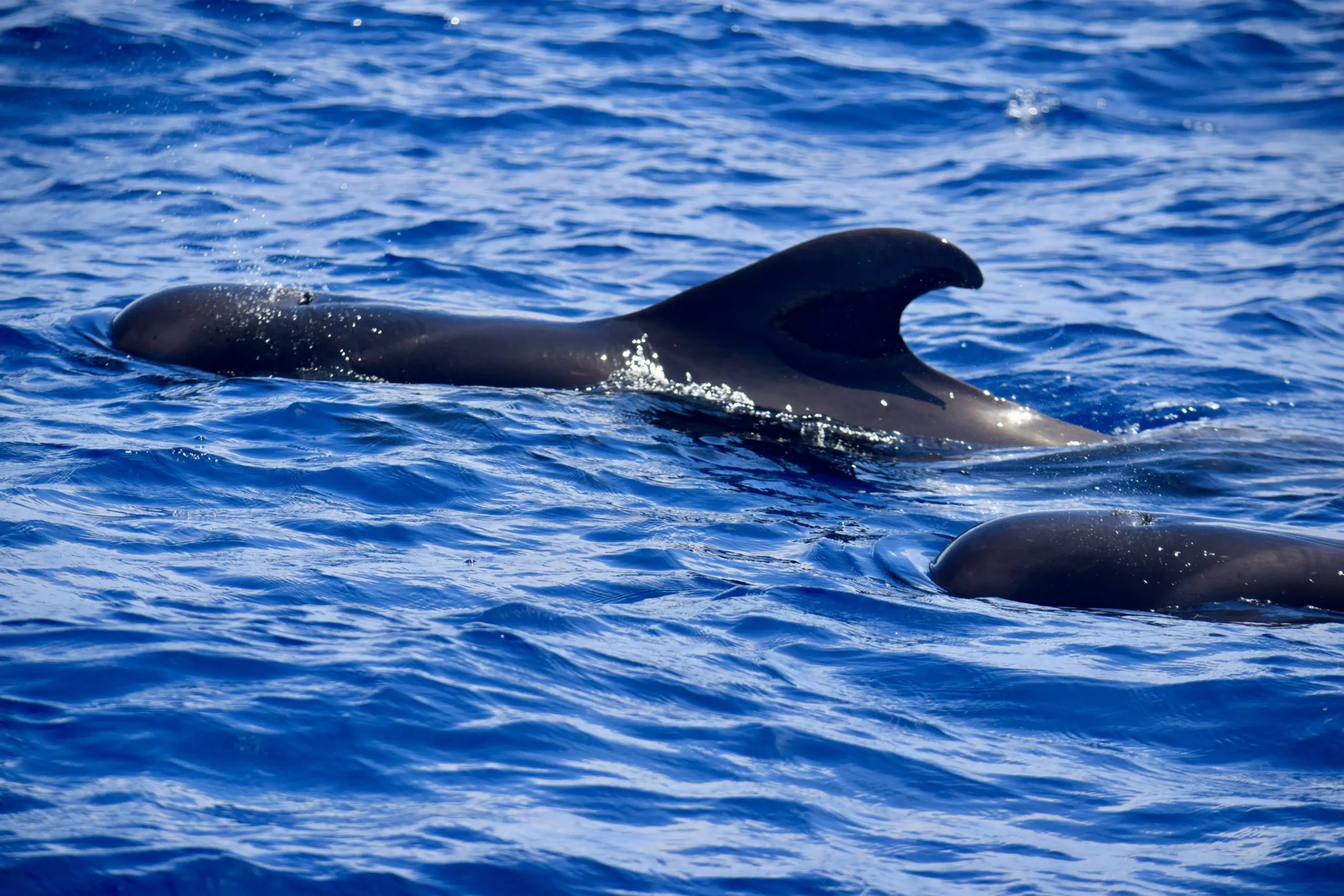
Deep Divers: Pilot whales are known for their impressive diving abilities, they are considered the cheetahs of the sea. They travel at 36 km/h, making them among the fastest cetaceans.
They can dive to depths of over 3,2800 feet (1 km) in search of prey, such as squid and deep-sea fish, and can stay submerged for extended periods of time.
Distinctive Appearance: Pilot whales have a distinctive appearance characterized by a bulbous forehead, or melon, and a long, black body with a white or light-gray saddle patch behind the dorsal fin. These features make them easily recognizable in the water.
Matrilineal Societies: Pilot whale pods are typically led by older females, known as matriarchs, who play a central role in the social structure of the group. Younger females often remain with their mothers for life, contributing to the cohesion of the pod.
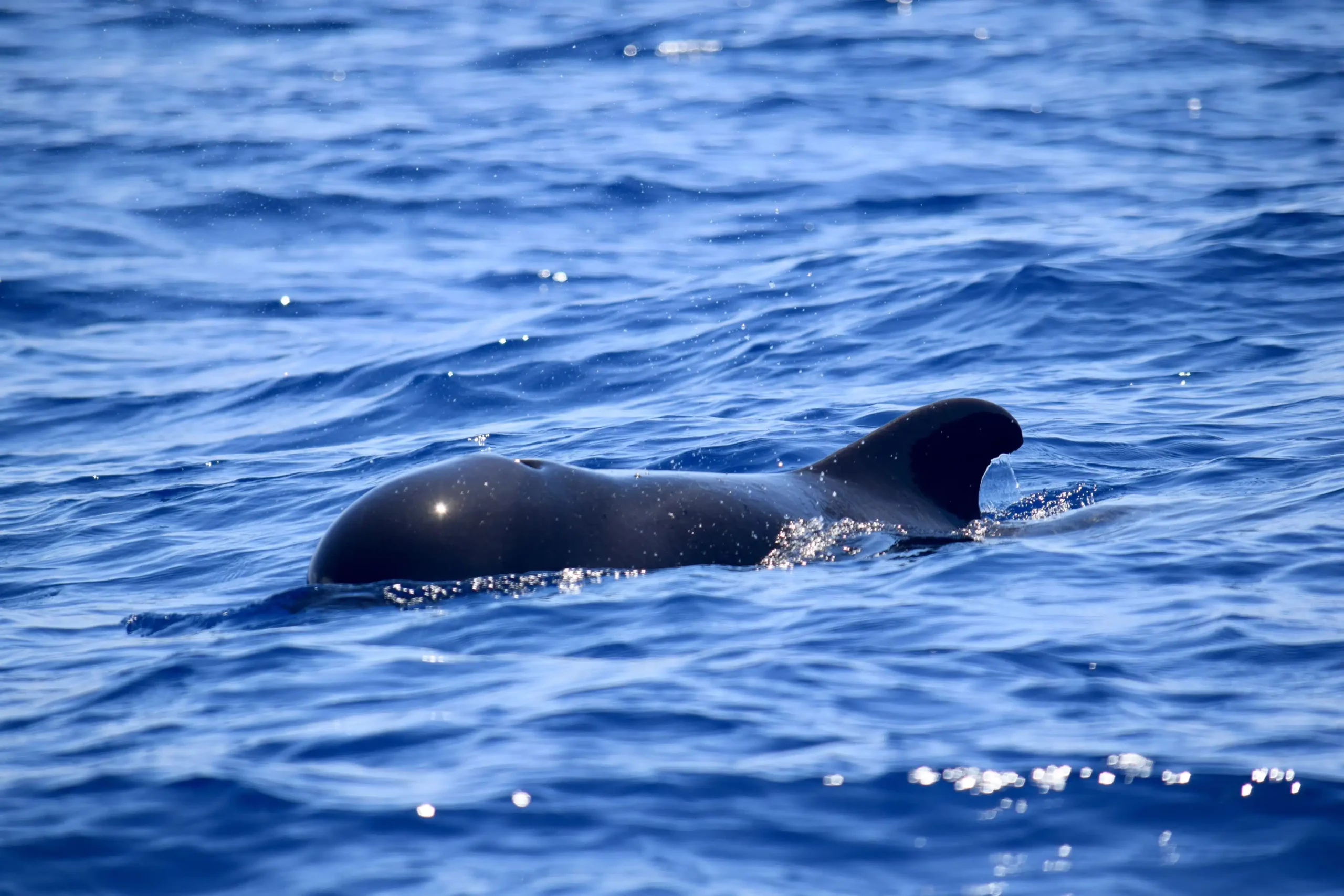
Vocal Communicators: Pilot whales are highly vocal animals and use a variety of clicks, whistles, and pulsed calls to communicate with each other. These vocalizations are thought to play a crucial role in maintaining social bonds and coordinating group activities.
Global Distribution: Pilot whales can be found in oceans around the world, although they tend to prefer deep, offshore waters. They are commonly sighted in temperate and tropical regions, including the waters around Tenerife, where they are a popular attraction for whale watching tours.
Tenerife is one of the best places to see them because we have the largest resident population in the world: around 400 identified individuals, as of today.
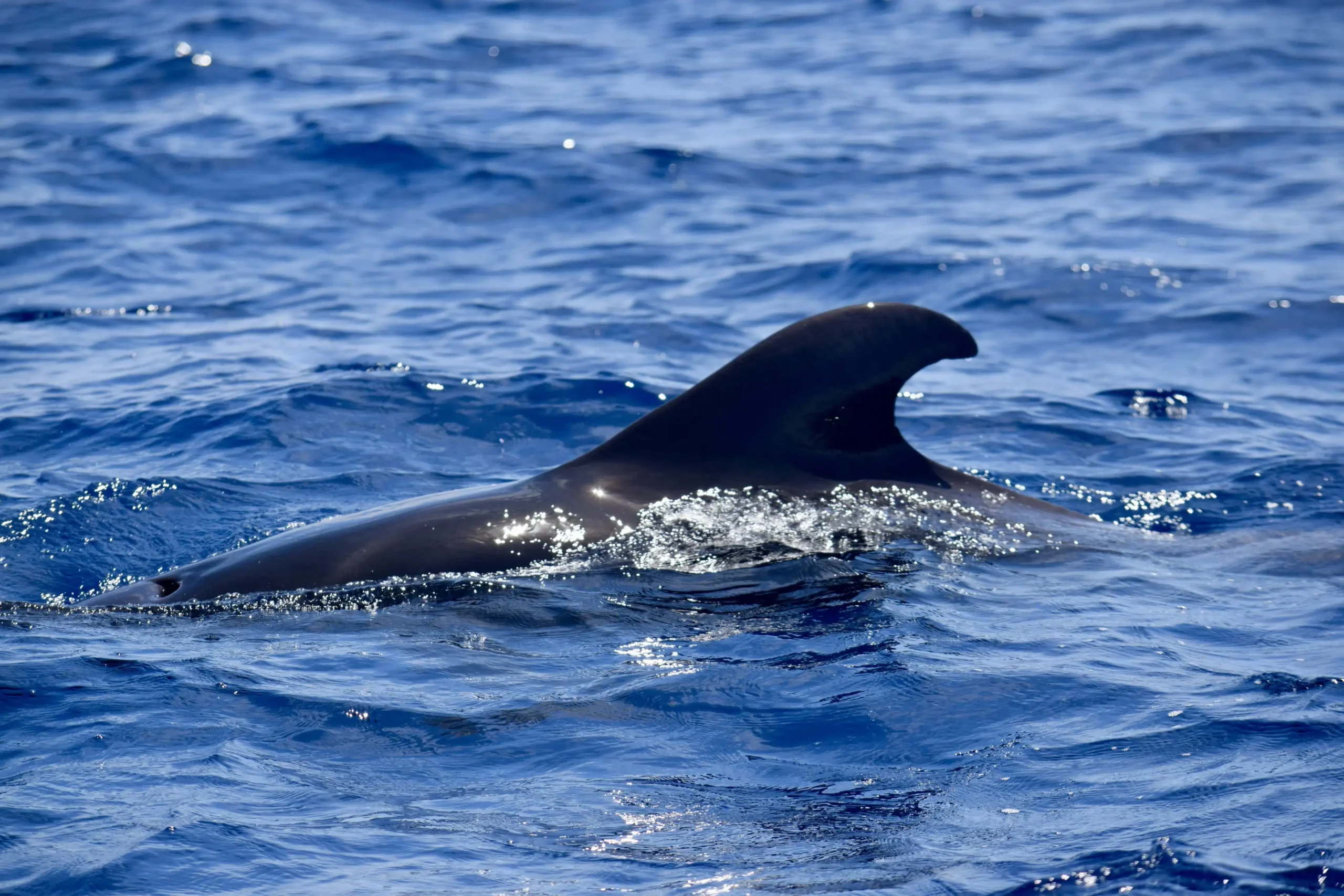
Long Lifespan: Pilot whales are relatively long-lived animals, with lifespans estimated to be around 45 to 60 years on average. However, some individuals may live even longer in favorable conditions, contributing to the stability and longevity of their social groups.
Females live around 60 years because they are one of the six species of mammals that go through a process we call menopause. Not being active breeders, the ‘grandmothers’ have the opportunity to care for the young, thus ensuring greater survival success. Males only live 40-45 years. When they reach 8 or 10 years of age, which is when they reach sexual maturity, they leave the family to find an available female in another family.
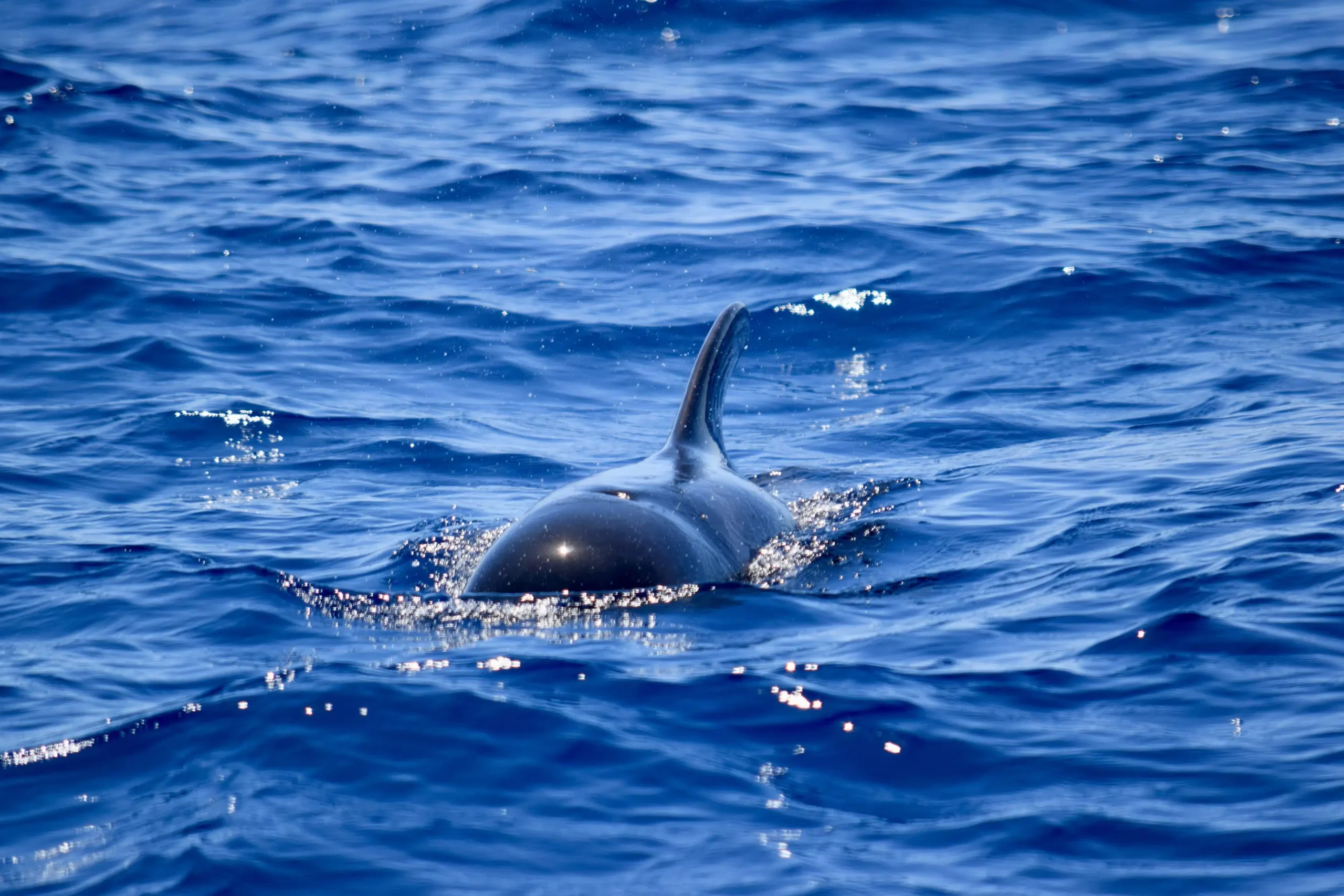
Conservation Concerns: Despite their widespread distribution, pilot whales face a range of threats, including entanglement in fishing gear, habitat degradation, and environmental pollution. Conservation efforts focused on reducing human impacts and protecting their marine habitats are crucial for ensuring the long-term survival of these remarkable creatures.
As you embark on our whale watching adventure in Tenerife, keep these fascinating facts in mind and marvel at the beauty and complexity of pilot whales in their natural environment. Witnessing these incredible animals up close is an experience you’ll never forget!
Book your tour with us: whalewatchtenerife.org
 Booking
Booking
